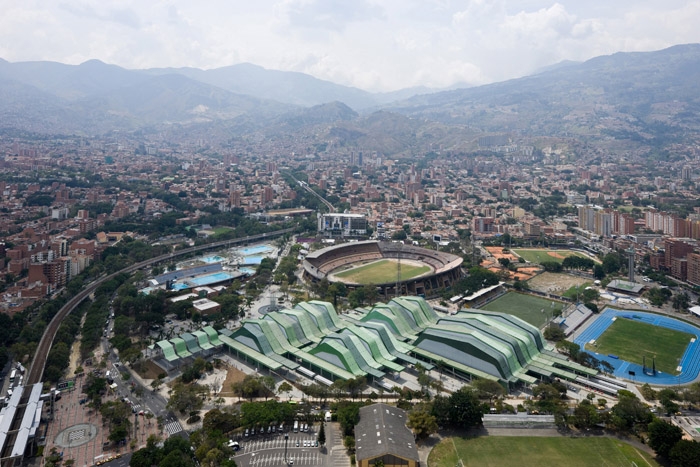 就是
就是

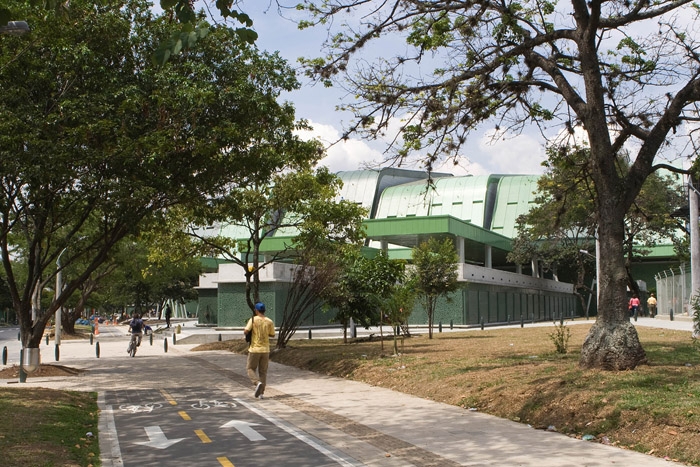
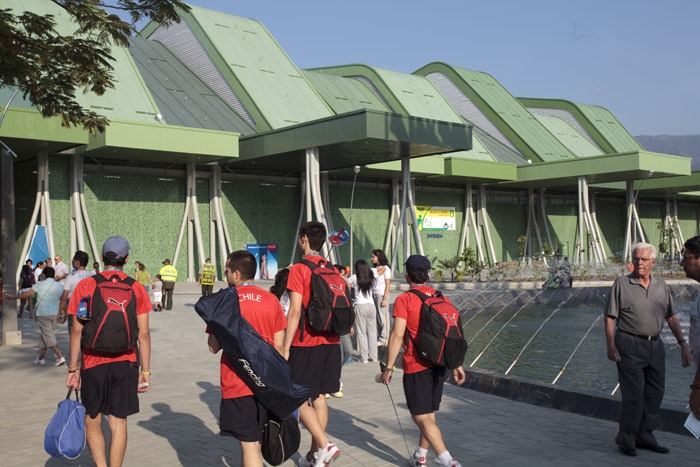
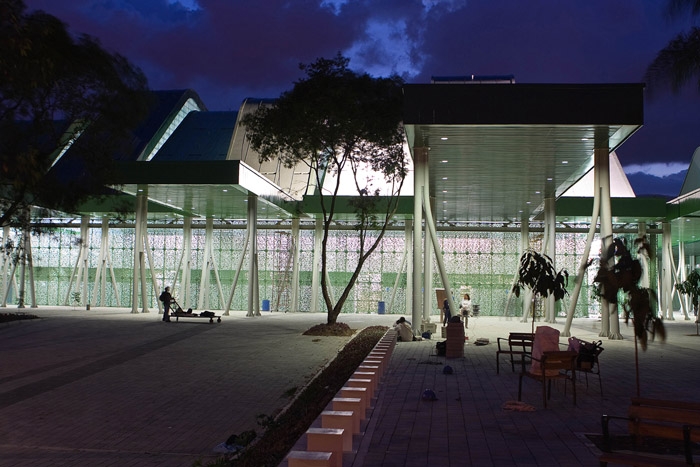
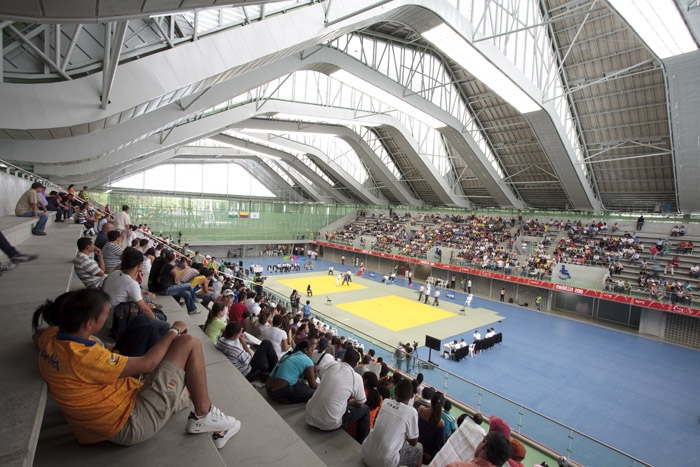
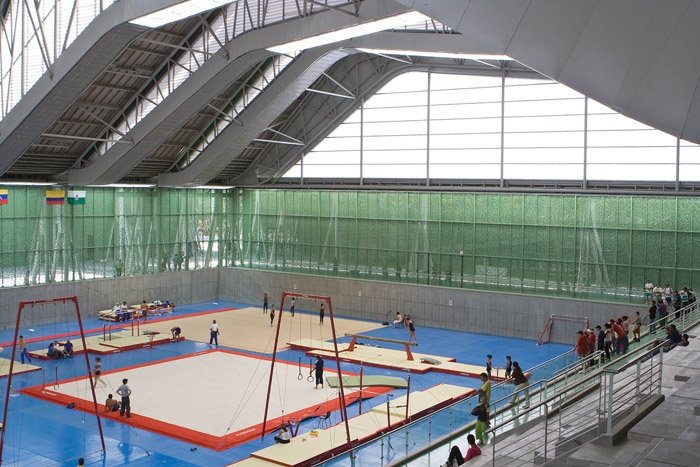
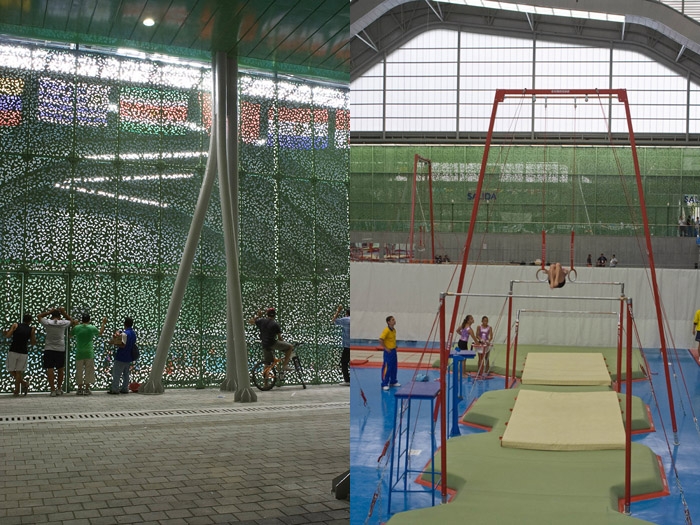
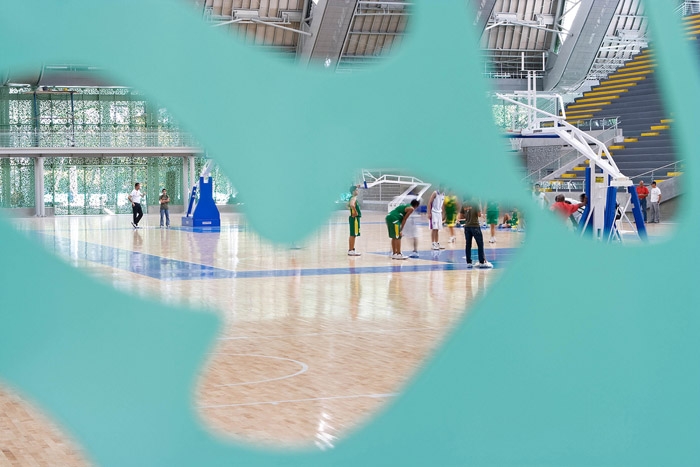
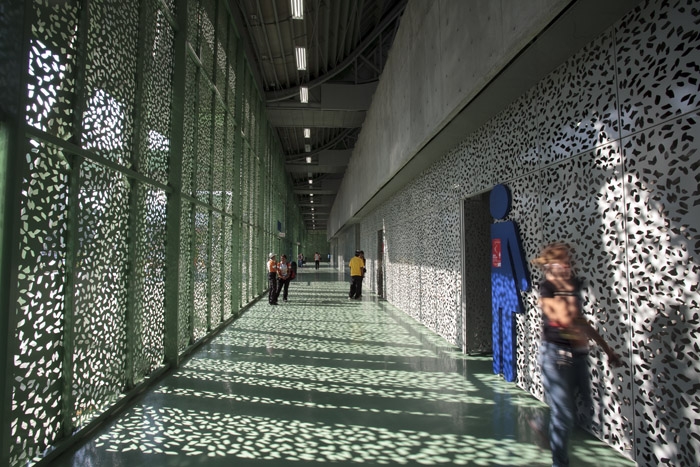
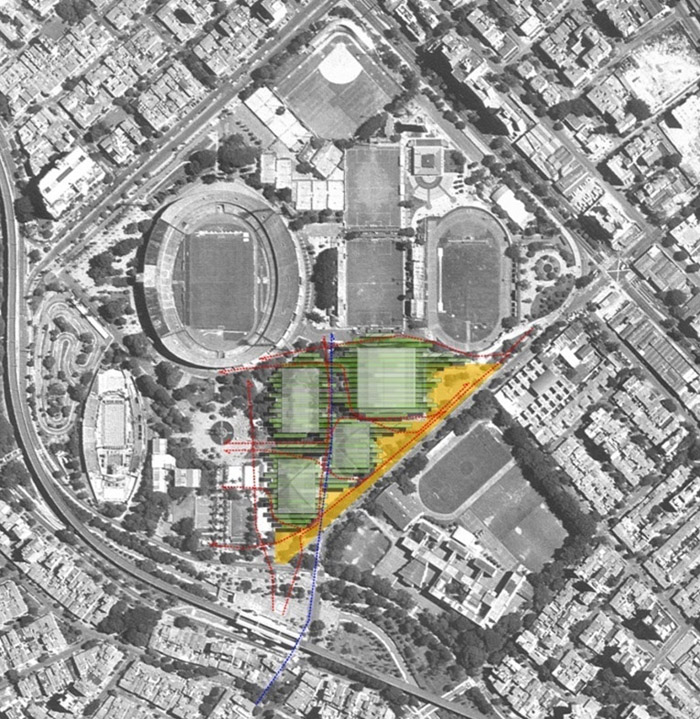
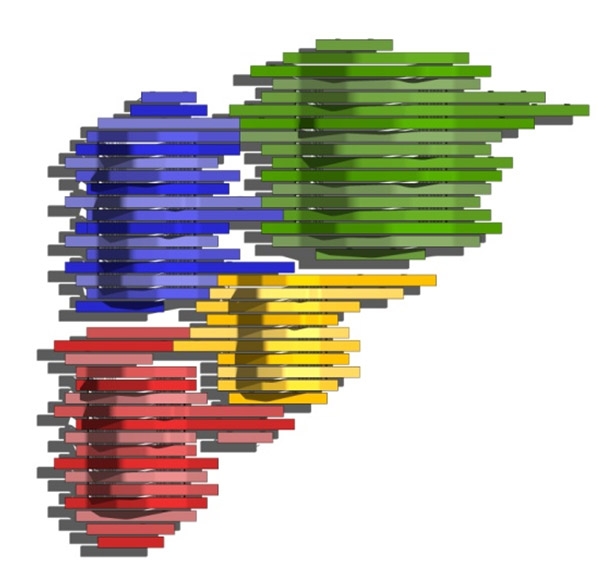
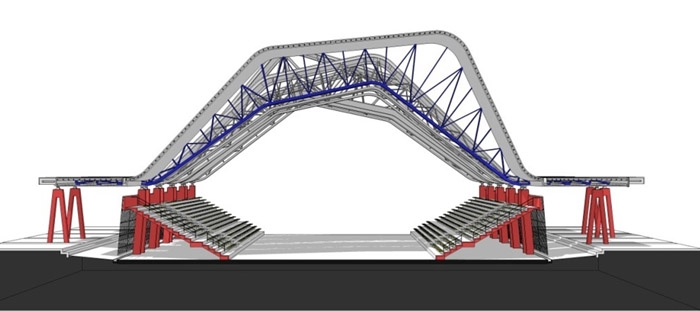
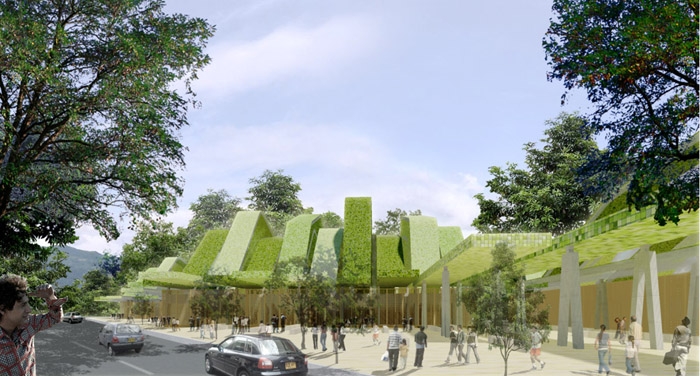
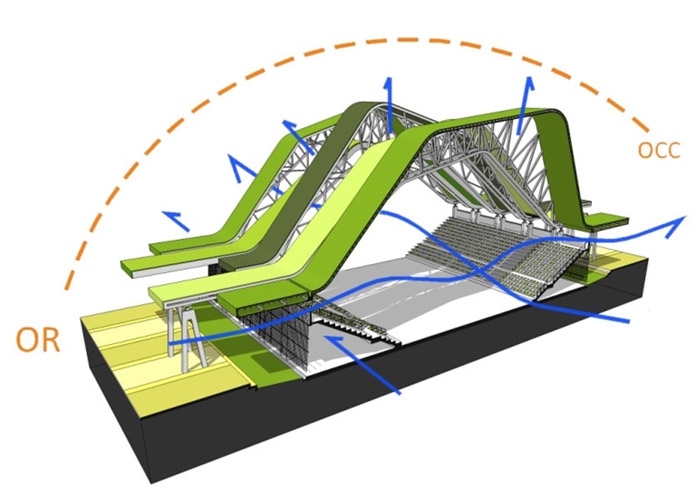
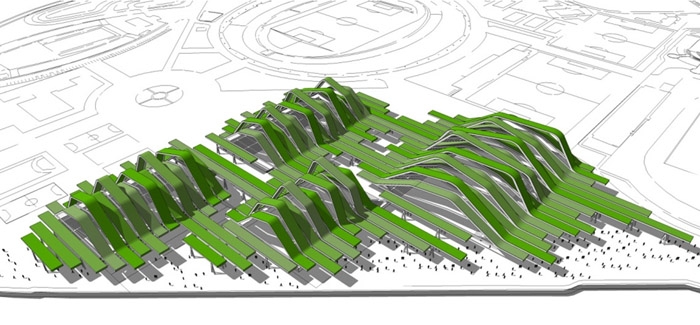
COLISEUMS FOR SOUTH AMERICAN GAMES
Giancarlo Mazzanti & Felipe Mesa
MEDELLíN - COLOMBIA
The project has been thought as a new geography to the interior of the elongated Aburrá
Valley, midway between Cerro Nutibara and Cerro El Volador. It is a building that seems to be
another mountain in the city; from the remote or from the top has an abstract image
geographic and festive; from the inside, the movement of the steel structure, allows the
filtered sunlight to get inside the space, which is the suitable condition for the conduct of
sporting events.
Urban and Architectural UNIFIED CONFIGURATION
Our project took the interior and exterior in a unified way. The outdoor public space and
sporting venues are in a continuous space, thanks to a large deck built through extensive
stripes out, perpendicular to the direction of the positioning of the main buildings. Each of
the four sporting venues operates independently, but in terms of urban space and behave as
one large continent built with public open spaces, semi-covered public spaces, and indoor
sports.
Our project has three possible groups:
Each of the four scenarios can be understood as a separate building, connected with another
on an urban scale. The three new scenarios can also be understood as a single large building,
related to the existing Ivan de Bedout Coliseum. The four coliseums can be understood as a
great place to set both the buildings and public space.
1. The skeleton of the project is the pattern.
Here the structure is an organization system or the understanding of vitality. It means that
the relation the project proposes is its skeleton.
2. The skeleton of the project is made of the symmetry of the structure and the muscles.
Here the structure is the way in which the limit or physiognomy of the project are equivalent
to the skeleton. The skeleton is on the outside or the epidermis and vice versa, it is an
expression of architecture. Architecture is qualified by the structure.
3. The skeleton of the project is the structure.
Columns, bases, beams, roofs. Stripes, canals. Interior space.
The intellectual structure of this project matches the supporting structure. On the
architecture of this project the intentions that support work, the final network that will
eventually use the subject and the structure or skeleton of the building all coincide. The
contrary: a containing architecture, of supposed flexible interior that hides the structure
on the perimeter. This doesn’t have anything to do with the skeleton because it would not be
occupied as a skeleton but as a void. The skeleton that we have analyzed doesn’t construct
empty spaces.
The mixture of these three orders or ways of understanding the skeleton propose a pattern for
growth and variation of the project that expand its status. They make it more as a vital and
beating form than a stable form.
In the interior of the sceneries the image of the skeleton seems raw when the trusses are
exposed, they are not longer melted down with the skin but directly with the structure. The
force lines loose a little of vigor due to its swelling and the perception of a hat becomes
more evident. Even the industrial image. The project melts public space with the interior
activities because the structure avoids finishing (stopping) at the swelling. The skeleton of
this project is a real structure…
Credits
Designers:
Arq. Giancarlo Mazzanti.
Arq. Felipe Mesa
Collaborators Architects:
Andrés Sarmiento Jaime Borbón
Rocio Lamprea Fredy Pantoja
Carlos Bueno Jairo Ovalle
Ana Maria Prado Carlos Acero
该项目位于南美哥伦比亚Cerro Nutibara和Cerro El Volador之间的Aburrá 谷,建筑看上去就像是城市中的另外一座山。建筑的钢结构将阳光引入到内部空间,这里非常适合进行体育运动。
建筑师将建筑内外部整合,室内体育空间与体育馆外部空间联系紧密。建筑的条纹定义了建筑物得方向感。建筑中的四个功能区可以分别单独使用,同时又与城市公共空间无缝连接,组成室外运动场所,半室内运动场所,室内运动场所。
这四个竞技场可以看成各个独立的建筑也可以理解为一个大型的公共建筑。
可以从三个方面理解这个构架。
1 项目的构架为一种模式。
构架可理解为系统组织,因此构架为主导。
2 构架中的内容
建筑结构源于当地地貌,在用具有表现力的形式和表皮展现。
3 构架是结构
地基,梁,屋顶,纹样,内部空间等等……
这样的构架认知支持着工作的进行,最后与建筑主体表达与结构等要素都不谋而合。这是一个适应性的混合产物,远远超越普通形式意义。建筑形体忠实反映结构,在某些地方,结构直接暴露,成为内部空间的一部分。